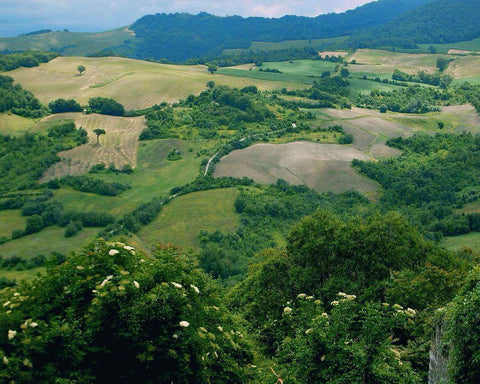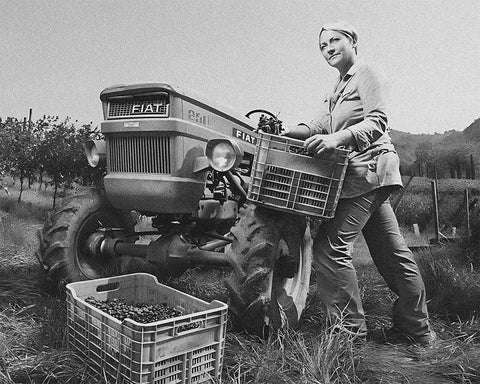What is a Pét-nat
Pétillant Naturel (a.k.a. “Pét-nat”) is the natural sparkling wine that thinks outside the special-occasion drink. Pét-nat’s are your spontaneous fast friend who takes you to a secret warehouse party where John Legend happens to be there. They’re fun, accessible, and ready for you to dive into the adventure!
Pét-nat dates back pre-Champagne and is made using the Méthode Ancestrale (aka Ancestral Method) ohhh rustic! And rustic it is! The méthode ancestrale was originally used in Limoux in the south of France in the early 16th century by winemaking monks. What a time and what a calling for those monks. Let’s dive into the technique!
The Ancestral Method
The process starts the same way as any regular dry wine. The must is fermented in a tank – yeast eats sugar, producing CO2, alcohol, and heat – but in our case fermentation is prevented from completing. This is achieved through temperature control or filtration. The wine is then bottled so that fermentation can finish in the bottle: CO2 is trapped in the bottle leading to the most fun science project of all.
Here’s the big reveal, after the ideal CO2 is reached and the wines are chilled again, no yeast or sugar is added for a second fermentation. Hey, natural sparkling wine! No additives is the name of the game with pét-nats which is different from the traditional method used with Champagne. Let's now take a closer look at how Champagne is made.
How Champagne is Made
The process also starts with a base wine, a cuvée made up of a blend of fermented dry wines. A mixture of yeast and sugar called liqueur de tirage is added to the dry wine – bottled with a crown cap in this first stage. This leads to the second fermentation, or as I like to call it, “Champagne science”, which happens in the bottle. Champagne bottles are then put into pupitres, bottle racks where they remain until they are disgorged. Disgorgement is the process of eliminating the lees, dead yeast cells, and other sediments which are the byproduct of the second fermentation.
Disgorgement occurs by settling the bottle upside down so that lees and other sediments can be removed. The neck of the bottle, where the deposits gather, is placed upside down into a freezing liquid. The frozen deposit is then expelled from the bottle by temporarily popping off the crown cap – a delicate maneuver where some wine is spilled due to the high pressure inside the bottle. The crown cap is replaced almost immediately with a Champagne cork, but not before a mixture of wine and sugar is added to top up the bottle. This mixture is called liqueur d'expedition, and it's a maître de chai (cellar master) secret.
Disgorge or Not?
See why people believe the ancestral technique might be the earliest form of sparkling winemaking? Fewer steps! Disgorging is a must for Champagne, but in the pét-nat world, one can choose to disgorge or not disgorge. Appearance aka, “hey I don’t know if I want to see this sediment in my glass” is one reason winemakers might want to disgorge. Another would be the effect that the sediment has on the taste and feel of the pét-nat.
Chilling the pét-nat helps keep the sediment at the bottom of the bottle and gives a more clear appearance. If a winetaster is into the funkiness and interesting qualities of a hazy glass then enjoy a taste more at the bottom of the bottle. The beauty of the pét-nat ancestral process is that it can be as ancestral as you’d like it to be. You have a choice to add in elements of the traditional process like disgorging and riddling or not. It’s a "choose your own adventure" of the pét-nat making journey!
Champagne or Pét-nat?
Now that we’ve talked about the background of pét-nats and Champagne, let’s get into our favorite part – opening the bottle. It’s a day where you want to celebrate life! Obviously, you want to go for a fabulous sparkling glass...but of what? Champagne or pét-nat? That depends on how quickly you want to celebrate and what texture experience you’re looking for.
It’s always good to take a moment after opening a sparkling bottle of something special to let the bottle open up. The magic of pét-nat is that due to the calmer foam and lower pressure, it's more quickly expressive after opening and the aromas are lavish. Champagne on the other hand produces a more bubbly effect – the air pressure is comparable to the air in a bus tire (hence the thick corks and cage.) Definitely exciting, who doesn’t like the satisfying pop of a bottle of a Champagne bottle? But to enjoy the tangy crispness and acidity of a Champagne it’s best to take a beat before the pour. Either way, the cheese board is waiting and there’s still the decision of which mouthfeel experience to pick.
Texture is one of the biggest differences between a pét-nat and a Champagne. It’s all about the mouthfeel experience. Yes, pét-nats have a calmer foam, but they have bigger bubbles on the palate. Take a sip of a pét-nat and the palate is greeted with big, bold, bubbles that lead to a great finish. Pét-nats can range from tasting like an off-dry wine to dry acid-driven and funky. A pét-nat knows how to kick off the night. It’s open from the start, has big bubbly energy, could bring the funk if it wanted to, and then cleans up after the party. A perfect party guest!
Champagne on the other hand has more consistency and delicate bubbles. It’s the kind of party guest that busts through the door, announces its presence, then stays in the corner making subtle banter with someone the whole night. Both are fun and offer a night of enjoyment, but different experiences.
Accessible and Made Naturally
Ultimately, pét-nats offer a natural treat for sparkling wine enthusiasts, not to mention that they are usually quite accessible in terms of price and availability. The ancestral method, a not as expensive technique as the Champagne method, allows winemakers to bring interesting, unique sparkling wines to the market. The fact that pét-nats are associated with natural wine, pét-nats are mostly made by natural wine producers who try their best to make wine ethically in small batches, also helps make this wine so popular with consumers. Pét-nats have been here all along – remember the 16th-century winemaking monks? – and have been ready to offer the world its wide range of fun flavors.
Author: Cecily Breaux ©









